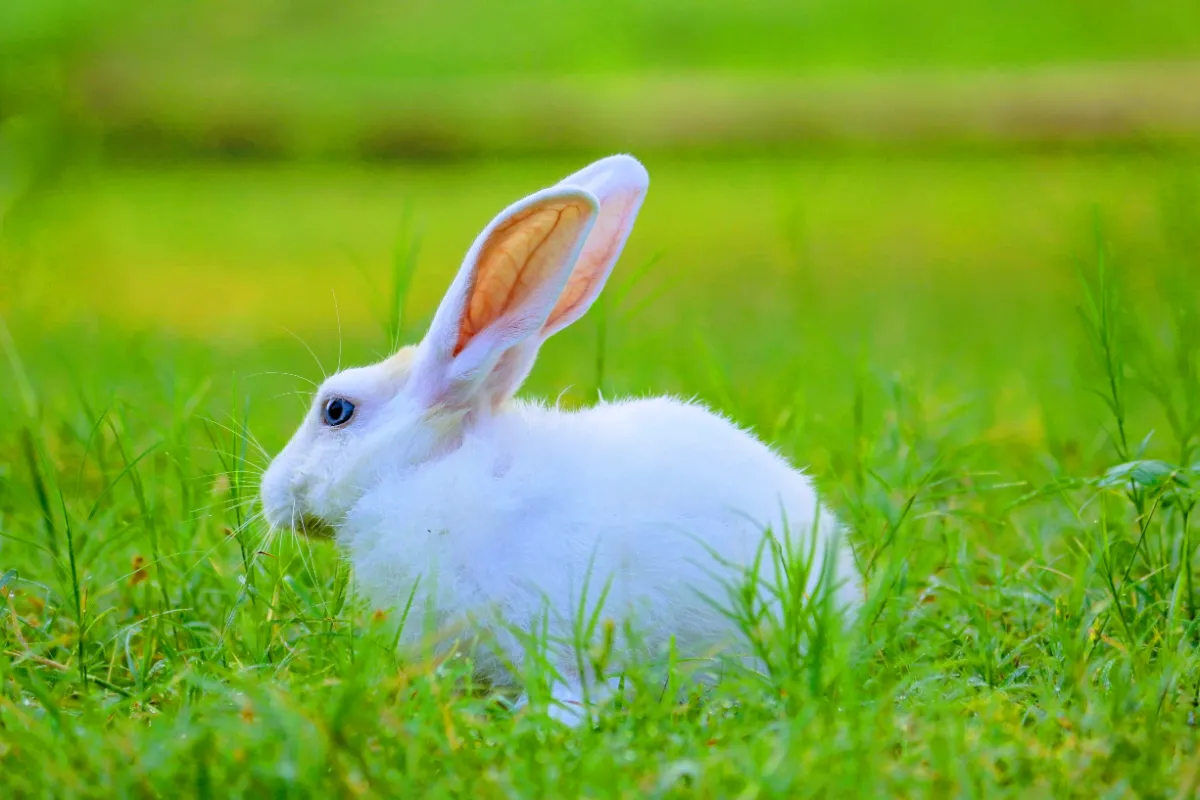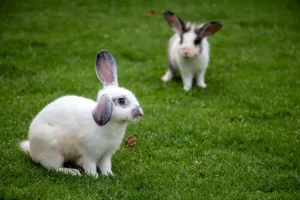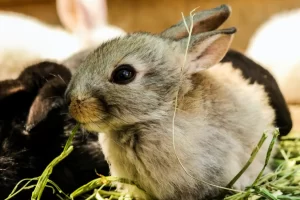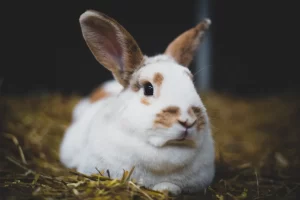Do you ever wonder if rabbits have tongues? Well, wonder no more! In this informative and detailed article, we will explore the fascinating world of rabbit tongues.
Discover how these furry creatures use their tongues for grooming and communication.
We’ll also delve into their taste buds and uncover surprising facts about their tongues.
So sit back, relax, and let us serve you with all the rabbit tongue knowledge you never knew you needed.
In This Article
- 1 Key Takeaways
- 2 The Anatomy of a Rabbit Tongue
- 3 How Rabbits Use Their Tongues for Grooming
- 4 Communication Through Rabbit Tongues
- 5 Rabbit Taste Buds: Exploring Their Sense of Taste
- 6 Tongue-Related Health Issues in Rabbits
- 7 Fun Facts: Surprising Things You Didn’t Know About Rabbit Tongues
- 8 Frequently Asked Questions
Key Takeaways
- Rabbit tongues have tiny, backward-facing papillae that aid in grooming and food manipulation.
- Understanding the unique structure and function of a rabbit’s tongue is essential for proper care and nutrition.
- Rabbits use their tongues for grooming behavior and communication, such as removing dirt and distributing natural oils.
- Rabbits have taste buds on their tongues and the roof of their mouths, with a preference for sweet flavors and an aversion to bitter tastes.
The Anatomy of a Rabbit Tongue
You should be studying the unique structure and function of a rabbit’s tongue.
The tongue of a rabbit is a fascinating organ that plays a crucial role in their daily activities.
The structure of a rabbit’s tongue is designed for efficient grooming and consuming vegetation.
It’s covered in tiny, backward-facing papillae that help the rabbit grasp and remove fur and debris from its coat.
These papillae also aid in the manipulation and grinding of food, as rabbits are herbivores and rely on their tongues to strip leaves and chew their food thoroughly.
Additionally, the tongue of a rabbit is highly flexible and can move in various directions, allowing them to clean hard-to-reach areas.
Understanding the unique structure and function of a rabbit’s tongue is essential for providing proper care and nutrition to these adorable animals.
How Rabbits Use Their Tongues for Grooming
Rabbits groom themselves by using their flexible tongues to lick and nibble, which helps to keep their fur clean and tangle-free. The structure of a rabbit’s tongue is unique and perfectly suited for their grooming needs. Here are three interesting facts about rabbit tongue structure and grooming techniques:
- Papillae: Rabbit tongues are covered in tiny, backward-facing papillae, which act like miniature brushes. These papillae help remove dirt, debris, and loose fur from the rabbit’s coat.
- Nibbling Technique: Rabbits use their front incisors to nibble on their fur, removing any tangles or mats. This technique is essential for maintaining a smooth and healthy coat.
- Self-Cleaning: Rabbits are meticulous groomers and spend a significant amount of time cleaning themselves. They use their tongues to distribute natural oils throughout their fur, keeping it soft and shiny.
Understanding the intricacies of a rabbit’s tongue structure and grooming techniques can help pet owners ensure their rabbits’ health and well-being. Regular grooming sessions and a clean environment are essential for a happy and healthy bunny!
Communication Through Rabbit Tongues
An interesting fact about communication through rabbit tongues is that they can use them to convey different messages through various movements and positions. Rabbits have a unique tongue structure that allows them to perform a wide range of gestures, enabling them to communicate with one another effectively. Let’s take a closer look at some of these gestures:
| Gesture | Meaning | Example |
|---|---|---|
| Rapid flicking | Warning or agitation | When a rabbit rapidly flicks its tongue, it is signaling danger or discomfort |
| Slow licking | Affection or grooming | A rabbit will gently lick another rabbit to show affection or engage in grooming behavior |
| Extended tongue | Submission or appeasement | A rabbit extending its tongue is a submissive gesture, indicating a desire to avoid conflict |
Understanding these rabbit tongue gestures is crucial for anyone caring for rabbits, as it allows them to better interpret and respond to their needs. So, next time you observe a rabbit’s tongue movements, pay attention to the message it may be trying to convey.
Rabbit Taste Buds: Exploring Their Sense of Taste
Take a moment to consider how rabbit taste buds contribute to their ability to discern different flavors. Rabbit tongue sensitivity plays a crucial role in their taste preferences. Here are three fascinating facts about rabbit taste buds:
- Enhanced taste sensitivity: Rabbits have taste buds not just on their tongues, but also on the roof of their mouths. This allows them to detect subtle flavors and nuances that humans may miss.
- Preference for sweetness: Like humans, rabbits have a preference for sweet flavors. They have a heightened sensitivity to sugars, which may explain their fondness for fruits and vegetables.
- Bitterness avoidance: Rabbits have a particular aversion to bitter tastes. This is believed to be an evolutionary adaptation to protect them from consuming potentially toxic plants.
Understanding rabbit taste buds and their preferences can help us better cater to their dietary needs. By providing a variety of flavors that appeal to their taste buds, we can ensure their overall well-being and satisfaction.
Tongue-Related Health Issues in Rabbits
You should be aware of the potential risks and complications associated with tongue-related health issues in rabbits, such as tongue ulcers or infections. Rabbits, like many animals, use their tongues for various essential functions, including grooming, eating, and drinking.
However, tongue diseases and injuries can hinder their ability to perform these activities, leading to discomfort and potential health problems. Tongue ulcers, for example, can be caused by bacterial or viral infections, trauma, or underlying medical conditions. These ulcers can make it difficult for rabbits to eat and drink properly, resulting in weight loss and dehydration.
Additionally, tongue injuries, such as cuts or burns, can occur from sharp objects or hot food and beverages. It’s crucial to monitor your rabbit’s oral health regularly and seek veterinary care if you notice any signs of tongue disease or injury.
Fun Facts: Surprising Things You Didn’t Know About Rabbit Tongues
Did you know that rabbits actually use their tongues to clean themselves frequently throughout the day? It’s a fascinating aspect of their behavior that many people may not be aware of. Rabbit tongues have a unique structure that allows them to perform various tasks beyond just grooming. Here are three unusual uses of rabbit tongues:
- Grooming: Rabbits use their tongues to meticulously clean their fur, removing any dirt or debris. Their tongues are covered in small, backward-facing papillae that help in this process, almost like tiny bristles.
- Cooling: Rabbits don’t have sweat glands, so they rely on other methods to regulate their body temperature. One of these methods involves licking their fur, which helps to cool them down through evaporation.
- Sensing: Rabbit tongues are highly sensitive and packed with taste buds. This enables them to taste and detect different flavors in their food, aiding in the selection of suitable and nutritious plants to eat.
Understanding the intricate structure and unusual uses of rabbit tongues can deepen our appreciation for these fascinating creatures.
Frequently Asked Questions
How Long Is a Rabbit’s Tongue?
Rabbit tongues are fascinating. They play a crucial role in a rabbit’s daily activities. You might be surprised to learn that rabbit tongues can reach lengths of up to 10 centimeters! It’s truly remarkable how nature designs every creature uniquely.
Can Rabbits Taste Sweet Foods?
Rabbit tongue sensitivity varies, allowing them to taste different flavors. While they may not have a strong preference for sweet foods, rabbits can still enjoy them. So, yes, rabbits can taste sweet foods to some extent.
Are Rabbits’ Tongues Rough Like Cat’s Tongues?
Rabbits’ tongues have a unique texture and purpose. They are not rough like cat’s tongues, but rather smooth and covered in tiny papillae. Both tongues serve to groom and clean their fur.
Do Rabbits Use Their Tongues to Drink Water?
Yes, rabbits have tongues. They use their tongues not only to drink water, but also to clean themselves. Rabbits have taste buds on their tongues that help them detect different flavors.
Can Rabbits Stick Out Their Tongues Like Humans Can?
Yes, rabbits can stick out their tongues, but their tongue anatomy is different from humans. While humans have flexible tongues, a rabbit’s tongue is shorter and less flexible, allowing them to grab and chew food efficiently.





